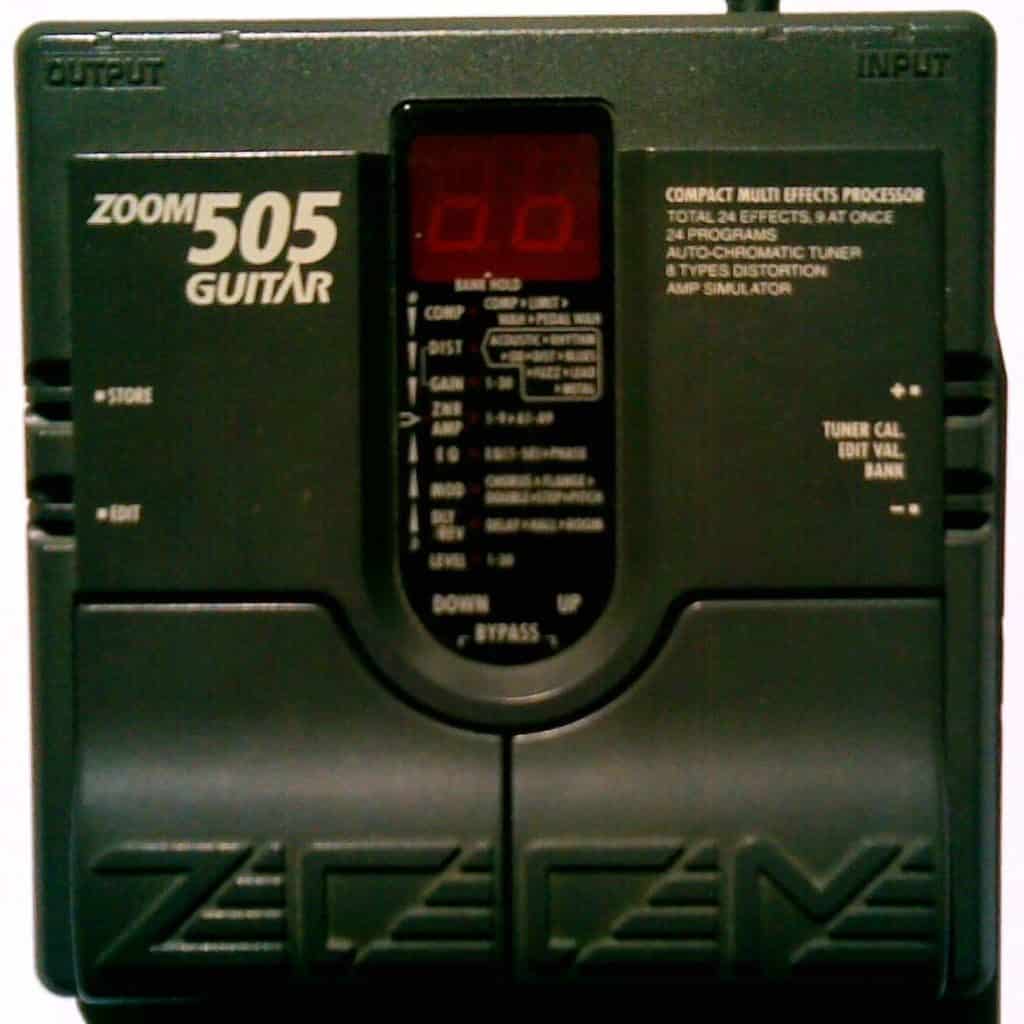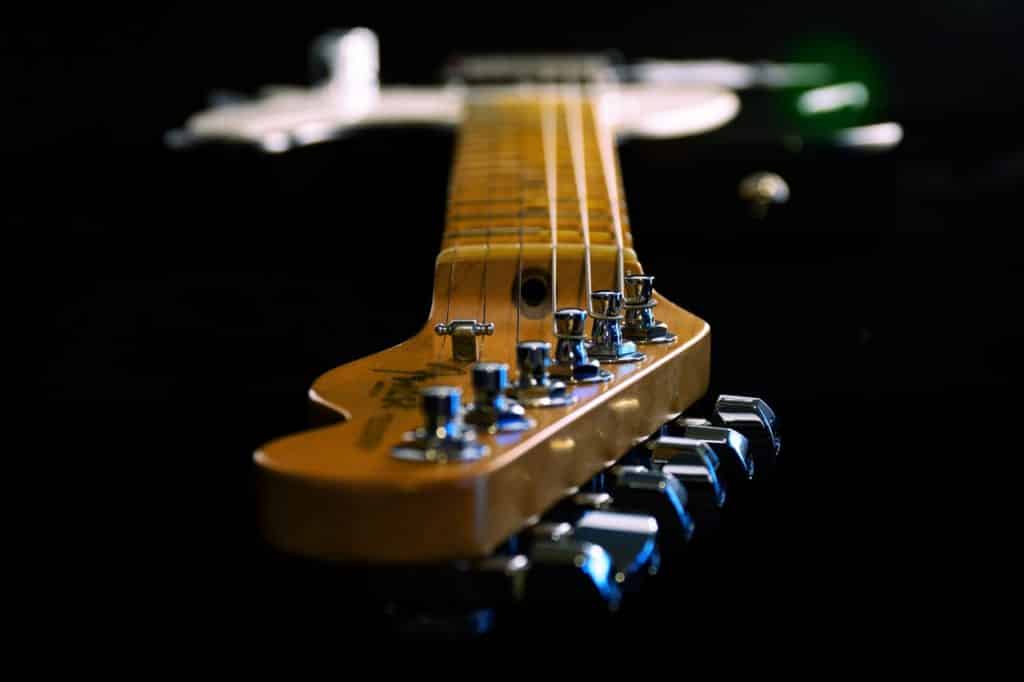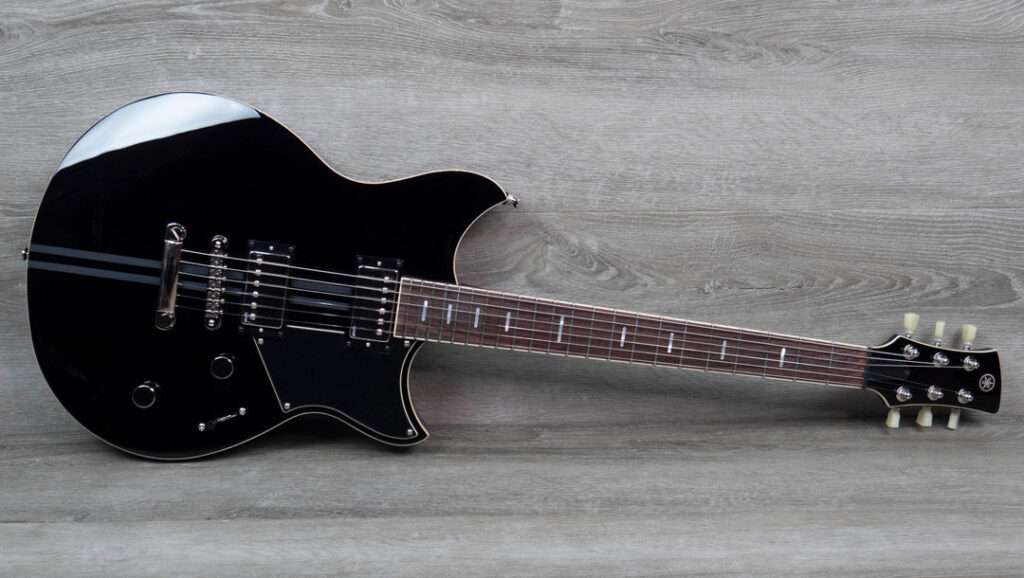My Guitar Pedal History goes all the way back to the early ’90s. Let me share with you the good, the bad, and the ugly, with the highs (and lows) of my journey along the way.
Boss CE-5 chorus ensemble
My very first guitar pedal which I used in my very first band, Exit. I remember being in Windows of the Arcade, Newcastle and it was this or the BOSS CE-2 Super Chorus. The BOSS CE-5 sounded better to me, bigger and more complex, but also more natural sounding.
A chorus pedal seems a strange choice to begin with, especially as I was playing directly through a PA clean at the time, due to the breakdown of my Vox AC30. But for the Floyd type of stuff we were doing? it was perfect.
Marshall Guv’nor
As my first band Exit morphed into the indie + originals Columbia and with the return of my overhauled AC30, I now had the need for overdrive. And lots of it! Initially, I ran my Laney LC15R as a preamp with spectacular results, but this was so impractical I really needed my first overdrive pedal, and quick!
Back at Windows, there were 3 options, the Soundtank version of the now legendary Ibanez Tubescreamer looked far too cheap, and between the ProCo RAT and Marshall’s range of pedals (The Guv’nor, BluesBreaker, and Shredmaster), well, on Marshall’s reputation and my gain needs, it had to be the Guv’nor.
Of course, it was the early 90’s and the internet hadn’t been invented yet. All we had were our ears and Guitarist magazine.
Marshall Guv’nors go for around £300 these days so I wish I’d kept it, but performance-wise it never really, well, performed. It just didn’t have enough gain through a Vox AC30 on tick over to really sing. I was at this point hankering for amp overdrive so this was the first and last overdrive pedal I bought for many years.
Zoom 505

Well, what an incredibly versatile piece of kit this was and a true breakthrough in guitar pedal technology. Not only was it cheap (£99 rings a bell), but it was compact, sounded fabulous, and could be used in a variety of applications.
I chose two, through the FX loop of my new amp, the Marshall VS100R, and as a recording interface for my Tascam Portastudio 4-track cassette recorder. It excelled in both.
Live, I made use of meat and potatoes delay, flanger and chorus effects as well as the handy tuner. Ok, 2-button switching wasn’t the most user-friendly but I could make it work with blank patches and some well-planned stomps.
For recording, the overdrives were impressive enough for me not to mic up my amp, and indeed, the presets were an excellent base for my own tones. I have the Zoom 505 to thank for the swirling phased guitar on my track Dance Right Through the Night.
The Zoom 505 is legendary. Brilliant pedal!
Korg AXG1
As Columbia folded, my life completely changed, and I found myself with my own home, a steady job, and for the first time, money to spend! It’s at this point I could afford decent gear, so I bought a Gibson Les Paul Standard and a Marshall DSL401 Valve amp. Pedal-wise, not really an upgrade, but my first introduction to a Wah pedal on the Korg AXG1.
The AXG1 itself, particularly in the shadow of the mighty Zoom 505 was pretty forgettable, the only point of note being the warmer overdriven tones.
Marshall VT-1 Vibratrem & SV-1 Supervibe Chorus.
What the Les Paul and Marshall really deserved, of course, was quality stand-alone guitar pedals to accompany them. The switch over to compact pedals was a true inspiration on my musical journey.
At the time, I wasn’t concerned with playing live or songwriting/producing, it really was simply all about playing for myself and developing as a guitarist, so with R.E.M.s Out Of Time, Automatic for the People, and in particular, the stuttering tremolo Peter Buck tones in Monster, I fell in love with these Marshall guitar pedals.
On a more personal note, these two fantastic pedals remind me of a particular stage of life; the break-up of an eight-year relationship, living alone, and returning home. After my interlude of guitar introspection, I stepped into the world of digital recording for the first time with the BOSS BR-8 hard disk recorder. I couldn’t really find a use for the Vibratrem in this context, but the Supervibe Chorus was just the ticket for lush-sounding clean parts.
My era of playing the guitar purely just for the sake of it, with a focus on tone and the best quality gear out there, started and ended with the Marshall VT-1 Vibratrem and SV-1 Supervibe Chorus. Thanks, Marshall! (and Gibson).
Digitech RPX-400
As the BOSS BR-8 distracted me away from the glorious world of guitar playing in its purest sense, back into the world of songwriting/production, I was pulled into a world of tech away from the analog, of 1’s and 0’s, latency, RAM and software.
As the BR-8 aged, the shiniest piece of gear on the market was the Digitech RPX-400, both a Multi-FX guitar pedal AND a USB recording interface. How could I resist?
I wish I had. As a recording interface, the proof is in the pudding, I didn’t manage to record anything with the RPX-400, unlike the BR-8, but that’s another story. Sadly, the best recollection of the RPX-400 is that it did nothing for me, was too complicated, looked cheesy, and ultimately took me as far away from guitar playing as I’d ever been.
BOSS ME-50
Little did I know that just around the corner, from the ashes of Exit and Columbia would rise Blustar (formerly Bluestar) and before I knew it, I was gigging again. Looking at the set-list of acoustic through to indie through to rock, I knew I needed the flexibility of a Multi-FX again, so the BOSS ME-50 was a bit of a no-brainer at the time.
Fast forward 3 years of gigging and recording with Blustar, and the BOSS ME-50 never missed a beat. I ran it through the front of my Marshall AVT-50 combo, with the gain controlled on the guitar and the amp set to full gain. To my ears at least, there was nothing it couldn’t do, even the wah and the whammy effects were fantastic. Party piece? Pulling off the You Give Love a Bad Name solo without a tremolo arm.
What set the BOSS-ME50 apart from my previous Multi-FX was its durability, with its metal casing and solid build; its ease of use, with the manual dials and 4 footswitches; and also its flexibility with the manual and auto modes meaning you could set it up how you wanted. The BOSS-ME50 was the perfect live tool and the beginning of my love affair with BOSS products in general.
Dunlop Cry Baby Wah & Korg DT10 Tuner.
The breakup of Blustar in 2005 kind of coincided with me losing my job and a lot of negativity in general, but a shining light on this period was auditioning for a band called Stoneleaf, a local outfit performing original Rock music. This was my opportunity for redemption.
Responding to their guitarist wanted ad, I received their 2 albums in the post and embarked on what seemed like months, woodshedding, getting up to the par of a band I believed to be levels above my current ability. Yet again the guitar rewarded me for my efforts.
So why go back to separates again? My BOSS ME-50 had gotten me through my successful audition, but I had no use for a lot of effects with Stoneleaf, so I went for quality over quantity.
I purchased the Dunlop Crybaby Wah while on a Christmas break in Glasgow at Merchant City music. A memorable event, as I was still riding the wave of euphoria from just joining the best I’ve ever been part of. Also, Merchant city music was special, a sort of central musician’s hub in a vibrant live music scene I sadly never got to be a part of.
As my first practice session with Stoneleaf approached, I needed one more element, a tuner, so I bought the best available at the time, the Korg DT10. I suppose I was trying to make a good impression. The Crybaby surprised me by how much range it had, with the fully toe-down position being razor-like, but that was the idea and after a little practice it was just about as authentic as you could get.
Alas, after the second practice the excitement and momentum had all but fizzled out. Stoneleaf continued on as a 3-piece before also fizzling out soon after.
Check out Dissolve by Stoneleaf, my favourite track of theirs.
Zoom G1XN
Around 2010, an I’ll-fated Blustar reunion practice necessitated a new multi-fx, so predicting the outcome I went cheap with an update of my trusty old ZOOM 505.
Great pedal, improving on the 505’s switches and build in general, plus it had a built-in wah. However, this was the last time I would go for one of the very compact two-button multi-fx units. They fall between the two stools of tone (individual pedals) and useability (The bigger Multi-FX units).
Still, as a cheap, short-lived tool, it delivered.
BOSS ME-70
In 2012, The Cosmics (Formerly Cosmic Space Pirates) were born, and I was ready. I had the Amp (a Cornford Roadhouse 30), The Guitar (a Gibson Les Paul Studio), and the rest was easy, my go-to multi-fx brand, BOSS, and the latest incarnation of its ME series.
For a while, it worked perfectly, but running a multi-fx through the front of the Cornford, fabled for its overdriven tones, really wasn’t doing it just justice, especially in the way the delays were distorting. I wanted to take things up to the next level and use the effects loop.
The next 4 pedals formed my new setup.
TC Electronic PolyTune 2
For live gigging, this was a time-saver and a revelation! This polyphonic tuner basically tracked each individual string’s pitch as you strummed the open strings together, instantly and clearly displaying which, if any, were out. This was much quicker than having to check each string individually. Just this one little box made life so much easier and relieved at least some of the stress when the pressure is on and people are watching.
Built like a tank, simple, easy to use, and above all effective. Definitely worth the high-ish price tag.
Zoom G3
Already covered in the very blog. Please check out Zoom G3 Guitar Effect and Amp Simulator Review. The only guitar pedal I’ve bought twice!
VOX V847 Wah
The third component of my new setup. Compared to the Dunlop? Less range but also less of the high-end. This really didn’t last long at all as the jacks were hopeless. If I did it again I’d go back to the Dunlop CryBaby Wah.
Mooer Pure Boost
I employed this in the Cornford’s effect loop as a boost for solos and the effect was staggering, to be honest. Pushing the power tubes in this way gave less gain boost but a much preferable, beefier, more-of-everything-and-louder result.
Although the Mooer sounded epic and was designed to be tiny, it wasn’t really practical. The knobs were too small and fiddly, and because of the small footprint and its height, it wobbled on the board, which was frustrating. I’d never go back to this type of mini/nano pedal, sure they save space but in the heat of battle, they’re more difficult to use.
Boss SD-1 Super Overdrive
After The Cosmics phase one disbanded in around 2015, I immediately looked for a recruiting band and joined The Last Men on Earth. These guys were brilliant musicians, stalwarts of the local live scene, and even almost reached the big-time with their own music.
The reason I got the SD-1 and the BOSS Graphic EQ was because I needed better access to clean tones and more flexibility on my lead tones. In other words, I was locking horns with the other guitar player who already had his technique and tone nailed through years on the road! Me?, I was just the new guy.
The BOSS SD-1 Super Overdrive was therefore used for extra gain when required on solos, with my main gain coming from the incomparable Cornford. Once again I can’t fault BOSS, particularly its compact guitar pedal series, and this gave me both the gain and the Tubescreamer-esque mid-hump to push through the mix, vital in a two-guitar band and more controllable than the foot-switchable boost from the amp. Also worth mentioning, the fantastic price-point and iconic banana-yellow colour. You’ll never mistake this on your pedalboard!
BOSS GE-7 Graphic Equalizer.
Without channel switching, I needed a quick route to a clean tone. Enter the BOSS Graphic EQ, perhaps BOSS’s most underrated and useful pedal of all. The GE-7 has so many applications, but for me, it was simply to reduce the gain of my overdriven rhythm tone while slicing out the mids and increasing the highs. The result? Instant foot-switchable sparkling clean tone!
BOSS has the knack for solving guitarist’s problems, and the GE-7 Graphic Equalizer demonstrates this better than any compact pedal.
At this point, my journey continued back to The Cosmics and on into COVID, and everything since has been documented at some point already at The Blogging Musician. Here are all my acquisitions since…
TC Electronic Nova System Review
Guitar Overdrive Pedal Shootout : Joyo Ultimate Drive Review
Guitar Overdrive Pedal Shootout: Electro-Harmonix East River Drive Review
Guitar Overdrive Pedal Shootout: Joyo Crunch Distortion Review
Guitar Overdrive Pedal Shootout : ProCo Rat 2 Review.
Guitar Overdrive Pedal Shootout :Danelectro Cool Cat Drive V2 Review
Danelectro Cool Cat Transparent Overdrive V2 Review
Guitar Overdrive Pedal Shootout: BOSS Blues Driver BD-2 Review
BOSS ME-80 Guitar Multiple Effects Review
What’s your guitar pedal history?
I hope you’ve enjoyed my trip down memory lane in chronological order of guitar pedals! I’d love to hear your own story of your favourite and not so favourite guitar pedals. Drop me a comment below!


